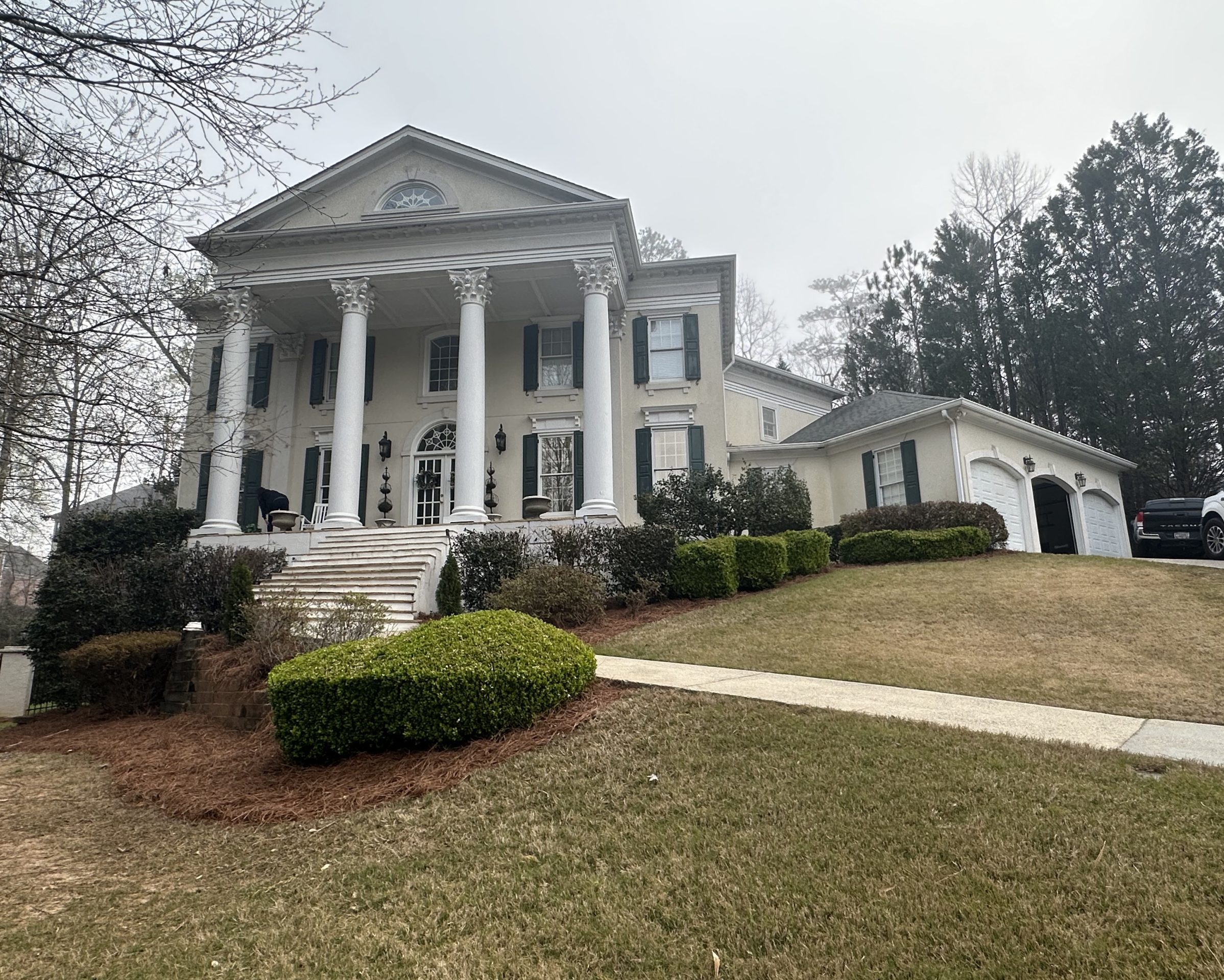
Refreshing the exterior of your Alpharetta home can breathe new life into its appearance and protect it from the elements. Stucco, elastomeric stucco, hardcoat stucco, and EIFS (Exterior Insulation and Finish System) are popular choices for exterior finishes due to their durability and versatility. In this comprehensive painting guide, we’ll explore everything you need to know about painting these surfaces, including techniques, tips, recommendations, and how to differentiate between them.
Understanding Different Stucco Surfaces:
-
Stucco:
- Traditional stucco is a mixture of Portland cement, sand, and water, providing durability and strength.
- Its textured finish adds character to homes and offers excellent protection against weathering.
-
Elastomeric Stucco:
- Elastomeric stucco contains special polymers that give it elasticity, allowing it to flex with temperature changes.
- This flexibility makes elastomeric stucco ideal for areas prone to cracking or movement.
- Elastomeric stucco is soft to the touch due to its elastic properties, making it stand out from other stucco surfaces.
-
Hardcoat Stucco:
- Hardcoat stucco is a thicker and more traditional form of stucco, offering superior durability and impact resistance.
- It is commonly used in areas with harsh weather conditions or high traffic.
-
EIFS (Exterior Insulation and Finish System):
- EIFS is a synthetic stucco system comprising layers of insulation board, a base coat, and a finish coat.
- It provides excellent energy efficiency and design flexibility, making it a popular choice for modern homes.
- EIFS, like elastomeric stucco, is soft to the touch due to its flexible and insulating properties.
How to Differentiate Between Stucco Surfaces:
- Texture: Traditional stucco often has a rough or textured finish, while synthetic stucco tends to be smoother.
- Flexibility: Elastomeric stucco and EIFS are more flexible and can stretch with movement, whereas traditional stucco is rigid.
- Thickness: Hardcoat stucco is thicker and provides greater impact resistance compared to traditional stucco.
- Layers: EIFS typically consists of multiple layers, including insulation board, base coat, and finish coat, whereas traditional stucco is applied in a single layer.
Techniques and Tips:
- Surface Preparation: Proper surface preparation is essential for a successful paint job. Clean the surface thoroughly, repair any cracks or damage, and apply a suitable primer.
- Paint Application: Spray stucco with paint using a high-quality acrylic paint specifically formulated for exterior surfaces. Follow up with a roller for an even application and to work the paint into the texture.
- Finishing Touches: Apply multiple thin coats of paint for a smooth finish, allowing each coat to dry completely before applying the next.
Recommendations:
- Select the Right Paint: Choose a paint designed for exterior use that provides durability and weather resistance. Consider factors such as color retention, UV protection, and ease of application.
- Consider Climate Conditions: Take into account the local climate when selecting paint colors and types. In Alpharetta, where summers are hot and humid, opt for paints with enhanced moisture resistance and thermal properties.
- Maintenance: Regular maintenance is key to preserving the appearance and longevity of painted stucco surfaces. Inspect the exterior of your home annually for signs of damage or wear and touch up paint as needed.
In conclusion, painting stucco, elastomeric stucco, hardcoat stucco, and EIFS surfaces requires careful planning and execution. By following the techniques, tips, and recommendations outlined in this guide, you can achieve professional-quality results that enhance the beauty and durability of your Alpharetta home’s exterior.
